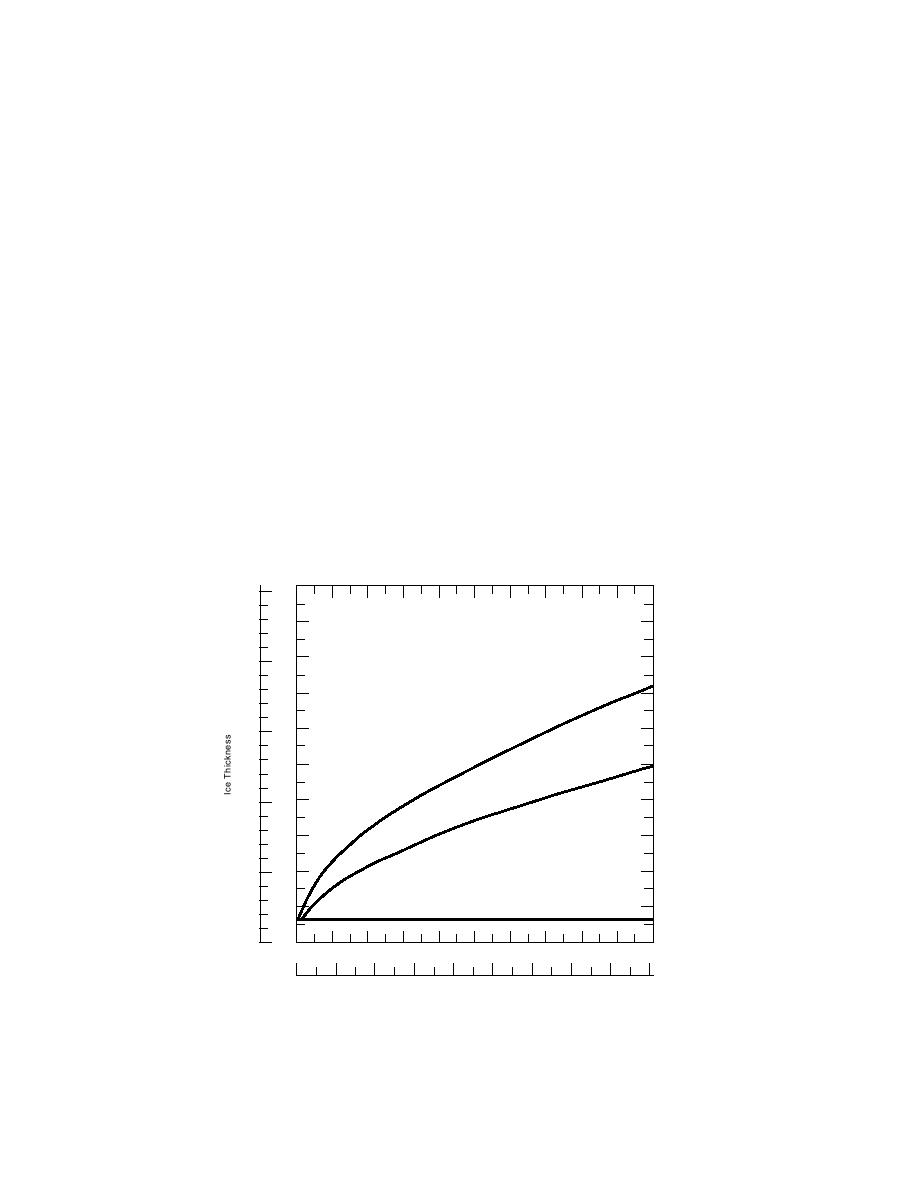
m will not degrade the ability of the ice to sup-
ways in the temperate world, it is very difficult
port heavy aircraft as long as the two ice types are
to replace or fix large flaws in glacial ice.
in intimate contact (i.e., no gap exists). Construc-
Cores should be taken to a depth of about 2 m
tion activities to smooth the ice may bring the
(6.5 ft). The core should be inspected for obvious
discontinuity much closer to the surface, and com-
discontinuities such as changes in ice type, snow
pression tests should be attempted with samples
or disaggregated ice layers, mineral horizons, or
that include the horizon. The results of this test
gaps. Segments of the core should be tested for
can then be compared to the strength recorded
compressive strength using conventional tech-
for samples from above and below the disconti-
niques (Lang and Blaisdell, in prep.). Tests should
nuity to determine the "weak link." If the discon-
be completed for the topmost 15 cm (6 in.) and for
tinuity is marked by a gap or snow horizon, this
samples centered at depths in the core of 30, 60,
will most likely govern the ultimate load bearing
and 90 cm (12, 24, and 36 in.). As a minimum, the
capacity of the ice surface. Mineral horizons will
ice strength should be 25% greater than the high-
degrade the strength of the discontinuity in direct
est contact stress for any design aircraft. Care
proportion to the quantity and concentration of
should be taken to ensure the compression tests
the rock particles.
be performed on each distinct ice type identified
within the region of consideration. If sound core
The thickness of the ice should also be mea-
segments cannot be obtained, the coring tool may
sured or estimated. Two types of glacial ice con-
be used for fragmenting the ice (in which case a
ditions could exist: alpine or continental glaciers
and ice shelves where the ice is supported by
better tool should be utilized) or the ice itself may
water. In general, a glacier with sound ice and
have low strength.
founded on rock will be able to support typical
Discontinuities within the core will be of par-
aircraft loads. However, glacial shelf ice must be
ticular interest. The lateral extent and depth of
of sufficient thickness to resist bending failure.
such horizons must be assessed, along with their
Guidelines for minimum freshwater ice thickness
effect on the strength of the ice column. In some
to support wheeled aircraft are shown in Figure 3
cases, a change in ice type at a depth of at least 0.5
(cm)
(in.)
100
250
90
80
200
70
60
150
FS = 2.0
50
40
100
FS = 1.0
30
20
50
Minimum Recommended Thickness of
10
Fresh Water Ice for Planes = 6 in. (15.2 cm)
0
200 103 (lb)
20
40
60
80
100
120
140
160
180
0
90 103 (kg)
0
10
20
30
40
50
60
70
80
Gross Weight of Aircraft
Figure 3. Thickness of floating freshwater ice recommended to support various
size aircraft.
5



 Previous Page
Previous Page
